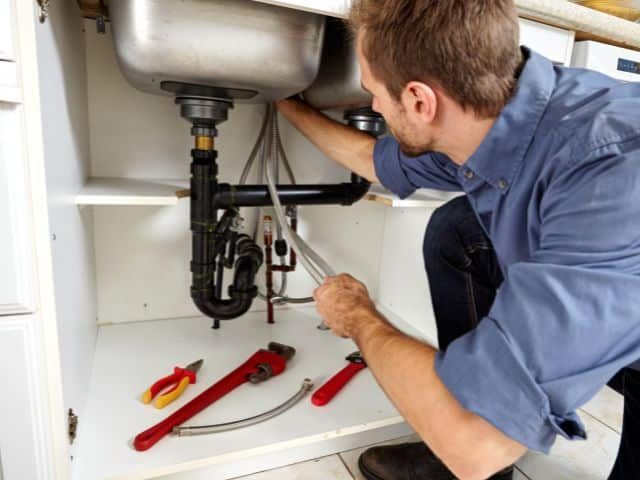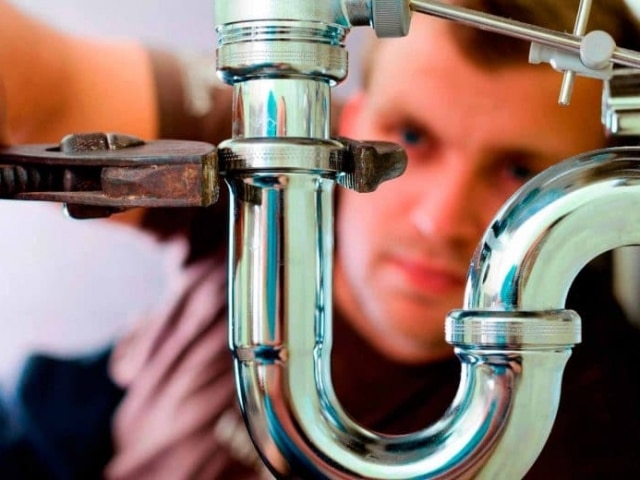Quick Fixes for Common Plumbing Issues

Plumbing issues often pop up at the most inconvenient times, and while some may need a professional touch, many can be solved with basic tools and a little know-how. Here are some quick fixes for common plumbing problems that you can tackle yourself, saving time, money, and stress.
1. Leaky Faucets
A leaky faucet may seem minor, but it can waste a surprising amount of water (and drive up your water bill!). This issue is usually caused by a worn-out washer or O-ring, which helps seal the valve to stop water flow.
Quick Fix:
- Turn Off the Water Supply: Locate and close the shut-off valve under the sink or in your home’s main water line.
- Disassemble the Faucet: Use a wrench or pliers to carefully unscrew the handle and any decorative caps. Once you reach the valve stem, remove it to access the washer.
- Replace the Washer or O-Ring: Find a replacement washer or O-ring that matches your faucet model (taking the old one to a hardware store can help you find a match). Insert the new part, reassemble the faucet, and turn on the water supply.
2. Clogged Drains
A clogged drain is not only inconvenient but can also create unpleasant odors in your kitchen or bathroom. Hair, grease, soap, and food particles are often the main culprits behind a slow drain.
Quick Fixes:
- Boiling Water Method: Boil a pot of water and pour it slowly down the drain in three stages, allowing the hot water to break down soap and grease build-up.
- Baking Soda and Vinegar: Pour half a cup of baking soda followed by a cup of vinegar down the drain. Let the mixture sit for 10–15 minutes, then flush with hot water.
- Use a Drain Snake: If the clog persists, a drain snake can be your best friend. Insert it into the drain, twist it to catch the blockage, and pull it out. This should dislodge tougher clogs.
3. Running Toilet
A running toilet can waste gallons of water daily and often signals a problem with the flapper, fill valve, or flush chain.
Quick Fixes:
- Adjust the Float: The float controls the water level in the toilet tank. If it’s set too high, it can cause the toilet to run. Adjust the float to stop the water from reaching the overflow pipe.
- Replace the Flapper: If the toilet still runs, check the flapper. Over time, it can become brittle, causing it to seal improperly. Turn off the water, drain the tank, and replace the flapper with a compatible model.
- Inspect the Fill Valve: If adjusting the float or replacing the flapper doesn’t solve the issue, the fill valve may be faulty. Replacing it is a simple DIY job. Turn off the water, remove the old valve, install the new one, and adjust the water level as needed.
For more detailed guidance or assistance on fixing running toilets, check out this helpful resource from https://hi-techplumbingandair.com/plumbing/toilets/.
4. Low Water Pressure
Low water pressure is a common complaint and can stem from several causes, including pipe corrosion, leaks, or sediment buildup.
Quick Fixes:
- Clean the Faucet Aerator: In many cases, mineral build-up in the faucet aerator (the screen at the end of the faucet) is the problem. Unscrew the aerator, soak it in vinegar for about an hour, then rinse and reattach.
- Check Shower Heads: If the issue is in your shower, unscrew the showerhead and soak it in vinegar. Use a brush to remove any mineral deposits, rinse it, and screw it back on.
- Inspect for Leaks: Walk around your home and check for any visible signs of leaks. Damp patches or puddles near pipes may indicate a leak that’s affecting water pressure.
5. Dripping Showerhead
A dripping showerhead not only wastes water but can also be annoying. The usual culprit here is mineral buildup or a faulty washer.
Quick Fix:
- Soak the Showerhead in Vinegar: Unscrew the showerhead, place it in a bowl with white vinegar, and let it soak for an hour. After soaking, scrub any remaining deposits with a brush.
- Replace the Washer or Rubber Seal: If cleaning doesn’t solve the issue, check the showerhead’s internal rubber washers. Over time, these can wear out and allow water to leak. Replace the old washer with a new one, then reattach the showerhead.
6. Garbage Disposal Issues
A jammed or clogged garbage disposal can create unpleasant odors and make kitchen cleanup difficult.
Quick Fixes:
- Reset the Disposal: Many disposals have a reset button underneath. Press the reset button to see if it clears the problem.
- Use an Allen Wrench: Insert an Allen wrench into the small hole at the bottom of the disposal and twist it back and forth to manually rotate and free any jammed items.
- Avoid Harmful Chemicals: Never use drain-clearing chemicals on a garbage disposal as they can damage the blades. Stick to mechanical fixes or a gentle mix of ice cubes and salt, which can help clean the disposal blades when running.
7. Water Heater Issues
If you notice a lack of hot water or hear odd noises coming from your water heater, you may have sediment buildup or a faulty heating element.
Quick Fixes:
- Flush the Tank: Shut off the power (or gas) and water supply to the heater. Attach a hose to the drain valve and empty the tank to remove sediment. Once drained, turn the water supply back on briefly to flush out any remaining sediment, then refill and restore power.
- Check the Thermostat: If the water isn’t hot enough, adjust the thermostat on the water heater. Most units are set to around 120°F, which is a good balance of comfort and energy efficiency.
- Replace Heating Element: If flushing doesn’t improve water heating, a heating element may need replacement. Be sure to consult the water heater manual or call a professional if you’re unfamiliar with this process.

8. Burst Pipes
A burst pipe is one of the most serious plumbing issues you can face. Quick action is essential to prevent water damage to your home.
Quick Fixes:
- Turn Off the Main Water Valve: The first step in any major leak is to shut off the water supply to prevent flooding.
- Patch the Leak: You can temporarily seal a burst pipe with an epoxy putty or a pipe repair clamp. Clean and dry the pipe before applying the putty or clamp to create a watertight seal.
- Call a Professional: A temporary fix can only last so long. Contact a plumber immediately to assess and properly repair or replace the damaged pipe.
Preventive Tips to Avoid Future Plumbing Issues
While knowing how to handle these quick fixes can save the day, preventive care is key to avoiding them altogether.
- Regular Cleaning: Clean your drains regularly to prevent clogs. Use natural methods (like baking soda and vinegar) and avoid pouring grease or hair down the sink.
- Inspect Pipes Annually: Regularly check your pipes for leaks, rust, or signs of wear. Catching issues early can prevent costly damage down the line.
- Install Drain Strainers: Use strainers in showers, sinks, and tubs to catch debris that could clog pipes.
- Keep Your Water Heater Maintained: Schedule regular maintenance for your water heater to keep it running efficiently and avoid sudden failures.
- Know Where Your Main Water Valve Is: In case of emergencies, turning off the main water valve can prevent serious damage. Every homeowner should know its location.
Most of these fixes are simple, requiring minimal tools and time. However, if the problem persists or seems beyond your control, don’t hesitate to call a professional plumber. The cost of a service call can be worth it to prevent larger issues, like water damage or mold growth. By learning a few quick-fix skills and sticking to a preventive maintenance routine, you can keep your home’s plumbing system in good shape and save yourself a lot of trouble in the future.

